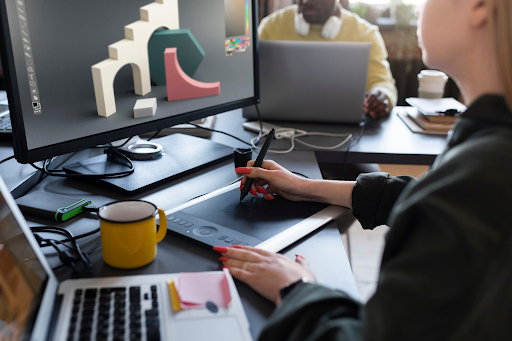Adobe Creative Cloud (CC) is the industry-standard suite of tools for designers, offering a range of applications that cater to different aspects of the design process. Whether you're a graphic designer, UI/UX designer, or digital artist, mastering these tools can significantly enhance your creativity and productivity. Here are the top 5 Adobe Creative Cloud tools every designer should know.
Adobe Photoshop: The King of Image Editing
Adobe Photoshop is arguably the most well-known design tool in the Adobe suite. It’s a powerhouse for image editing and manipulation, making it an essential tool for designers of all levels.
Why It’s Essential:
Versatility: Photoshop can be used for a variety of design tasks, from simple photo retouching to creating complex digital art.
Advanced Editing: Features like layers, masks, and adjustment tools allow for non-destructive editing, giving you complete control over your images.
Extensive Tools: Photoshop offers a wide range of brushes, filters, and effects, enabling you to create anything you can imagine.
Whether you're working on a simple photo edit or an intricate digital illustration, Photoshop provides the tools you need to bring your vision to life.
Adobe Illustrator: The Vector Graphics Champion
Adobe Illustrator is the go-to tool for creating vector graphics. Unlike raster images, vector graphics can be scaled infinitely without losing quality, making Illustrator the perfect choice for creating logos, icons, and other scalable designs.
Why It’s Essential:
Precision: Illustrator's Pen Tool allows for precise control over paths and shapes, giving you the ability to create clean, scalable vector graphics.
Typography: With advanced text tools, Illustrator lets you create and manipulate text with ease, making it ideal for creating logos, posters, and other typographic designs.
Versatility: Whether you’re designing a simple logo or a complex illustration, Illustrator provides the tools to create professional-quality vector graphics.
For any designer working with logos, icons, or any form of scalable art, Illustrator is an indispensable tool.
Adobe InDesign: The Master of Layout Design
Adobe InDesign is the industry standard for layout design, perfect for creating everything from brochures and magazines to books and digital publications. If your work involves combining text and images into a cohesive layout, InDesign is the tool you need.
Why It’s Essential:
Professional Layouts: InDesign allows you to create polished, professional layouts with precise control over text and image placement.
Master Pages: Master Pages make it easy to create consistent layouts across multiple pages, saving you time on large projects.
Integration: InDesign integrates seamlessly with other Adobe tools like Photoshop and Illustrator, allowing you to import and edit graphics directly within your layouts.
For any designer working with multi-page documents, such as brochures, reports, or magazines, InDesign is an essential tool.
Adobe XD: The Go-To Tool for UI/UX Design
As digital experiences become more important, so does the need for effective UI/UX design tools. Adobe XD is a powerful tool designed specifically for creating user interfaces and experiences for websites and mobile apps.
Why It’s Essential:
Prototyping: XD allows you to create interactive prototypes and wireframes, helping you to visualize and test user experiences before they go into development.
Collaboration: With real-time collaboration features, XD makes it easy to work with team members and clients, allowing for seamless feedback and iteration.
Responsive Design: XD’s responsive resize feature lets you create designs that adapt to different screen sizes, ensuring your designs look great on any device.
For any designer focused on creating digital products, Adobe XD is a must-have tool for bringing your UI/UX designs to life.
Adobe After Effects: The Animation and Motion Graphics Specialist
Adobe After Effects is the industry-standard tool for creating motion graphics and visual effects. Whether you’re animating a logo, creating a title sequence, or adding special effects to a video, After Effects provides the tools you need to make your designs move.
Why It’s Essential:
Motion Graphics: With After Effects, you can create dynamic animations that bring your static designs to life.
Visual Effects: After Effects offers a range of tools for creating stunning visual effects, from particle systems to 3D compositing.
Integration: After Effects integrates seamlessly with Adobe Premiere Pro, Photoshop, and Illustrator, making it easy to incorporate motion graphics and visual effects into your video projects.
For designers looking to add motion to their designs or create compelling visual effects, After Effects is an indispensable tool.

Mastering these top 5 Adobe Creative Cloud tools—Photoshop, Illustrator, InDesign, XD, and After Effects—will significantly enhance your design capabilities, allowing you to create stunning visual content for any medium. Whether you're working on a simple graphic or a complex multimedia project, these tools provide the power and flexibility you need to succeed in the competitive world of design.





